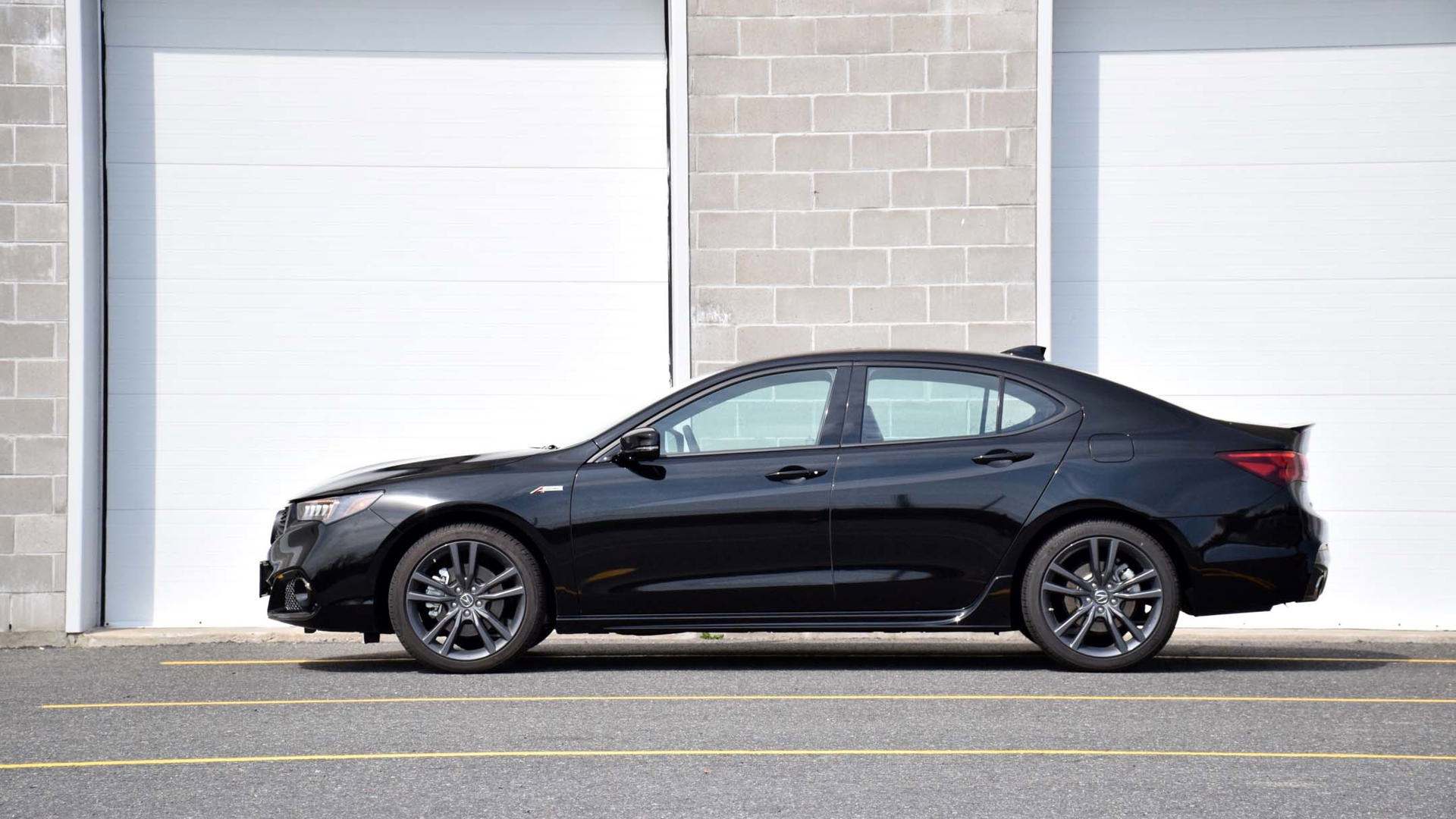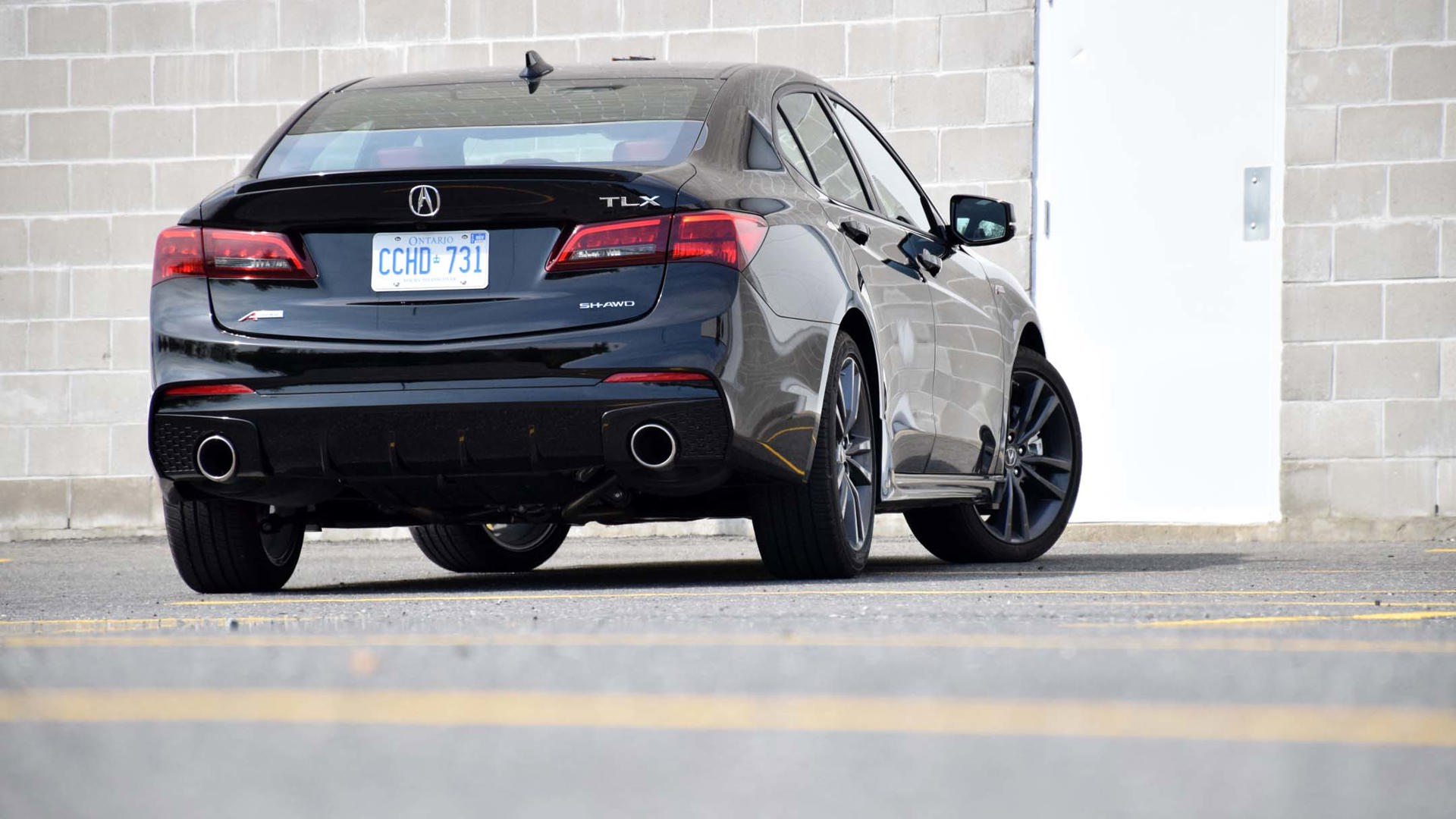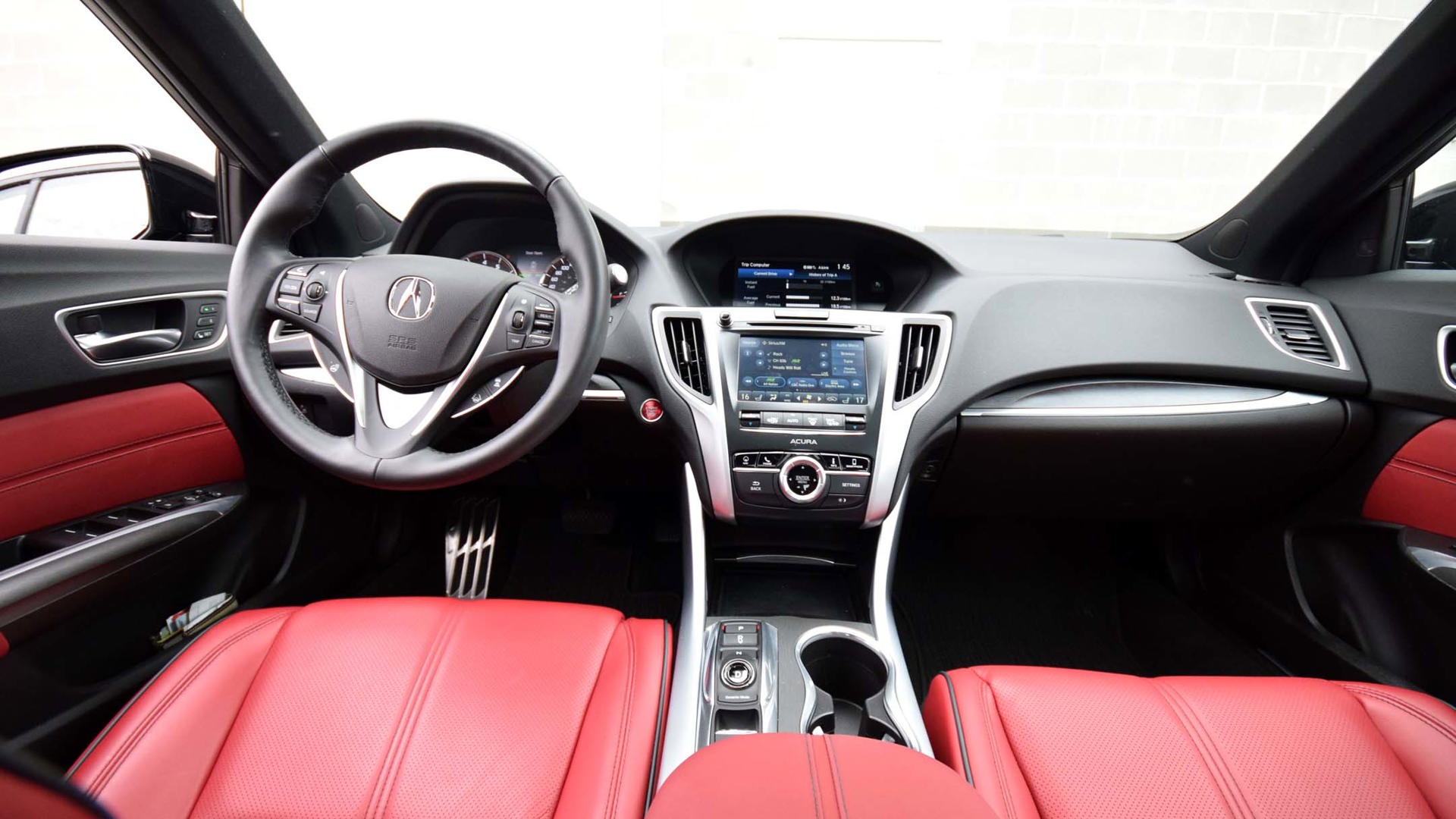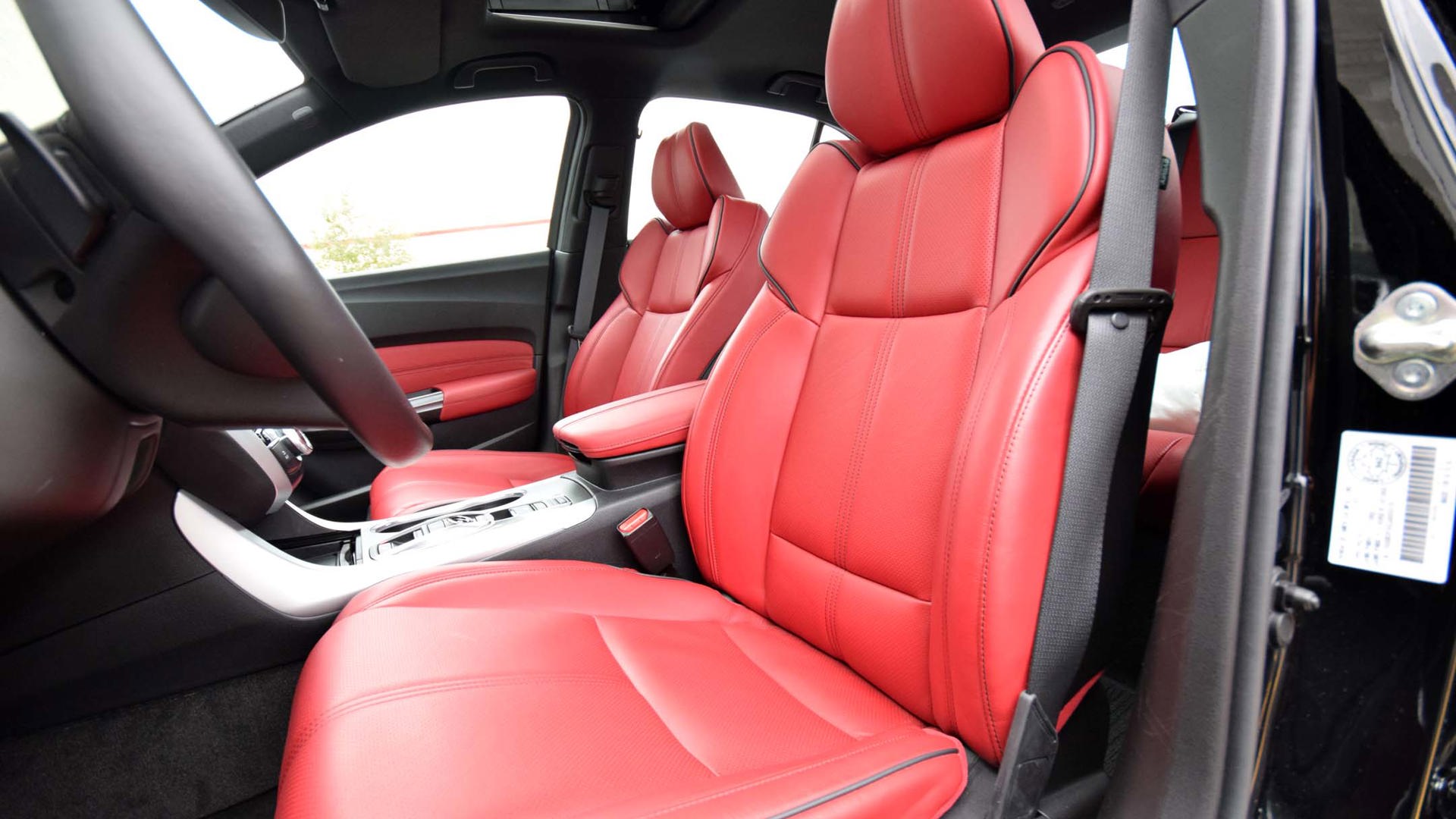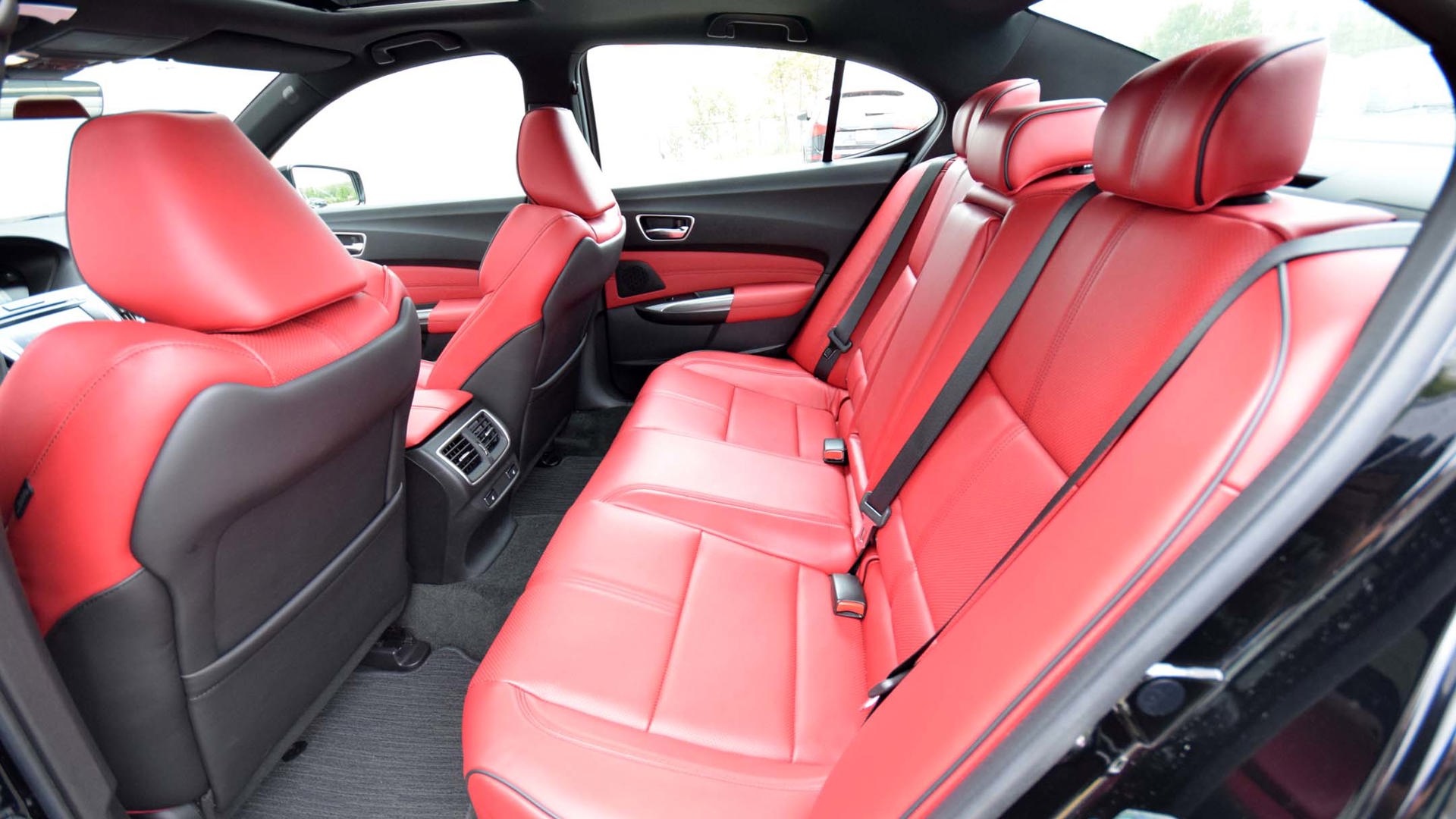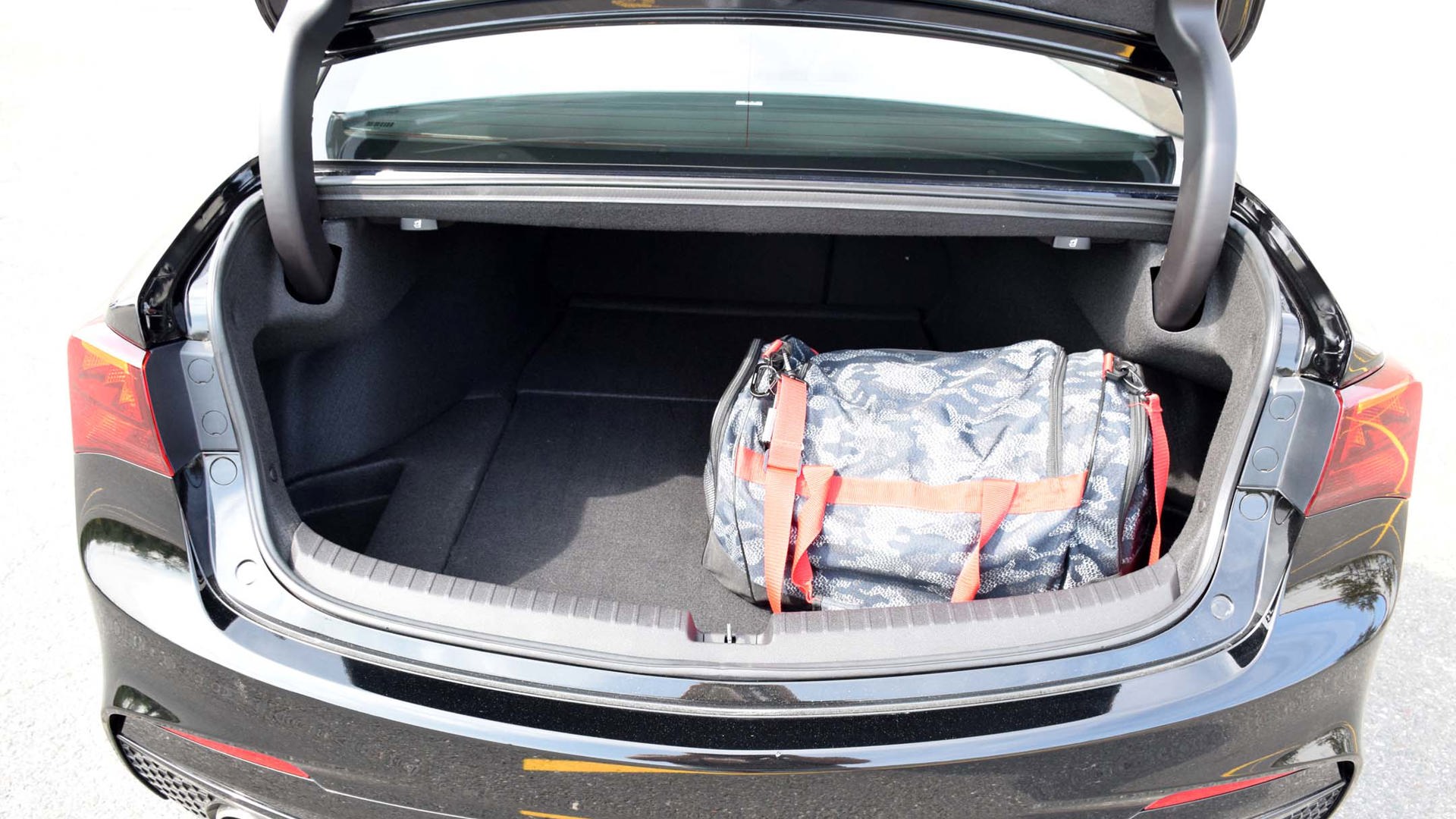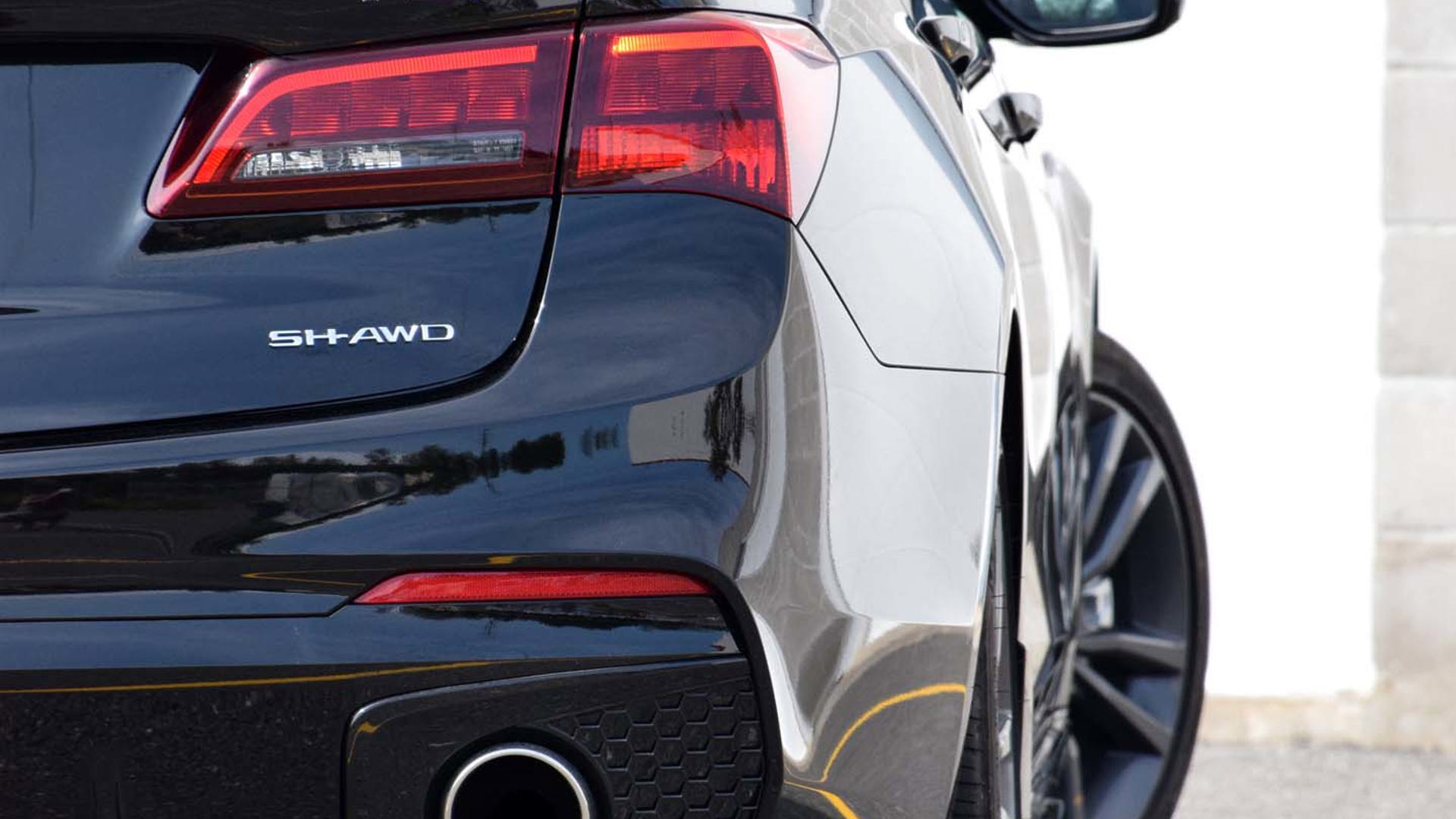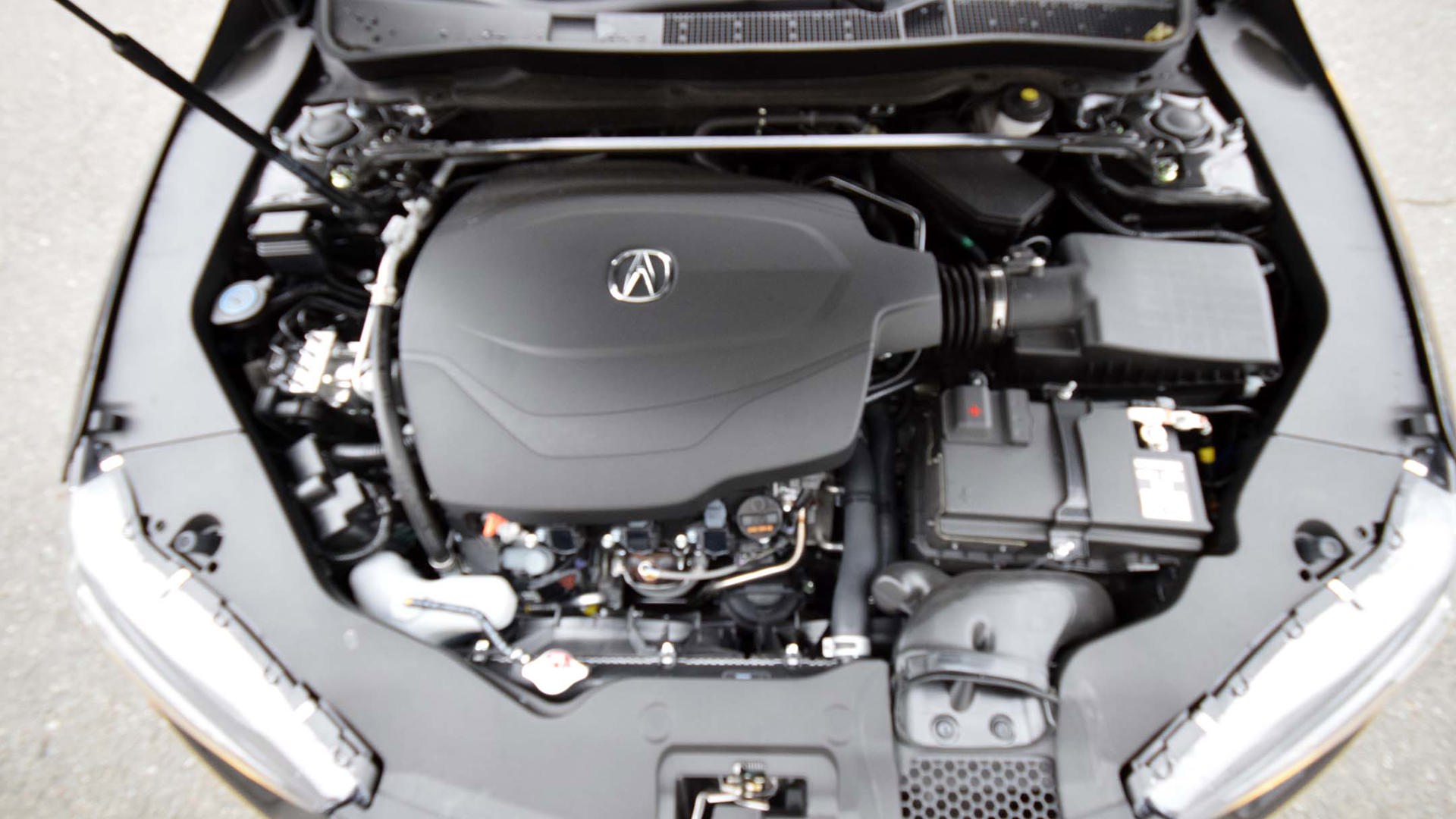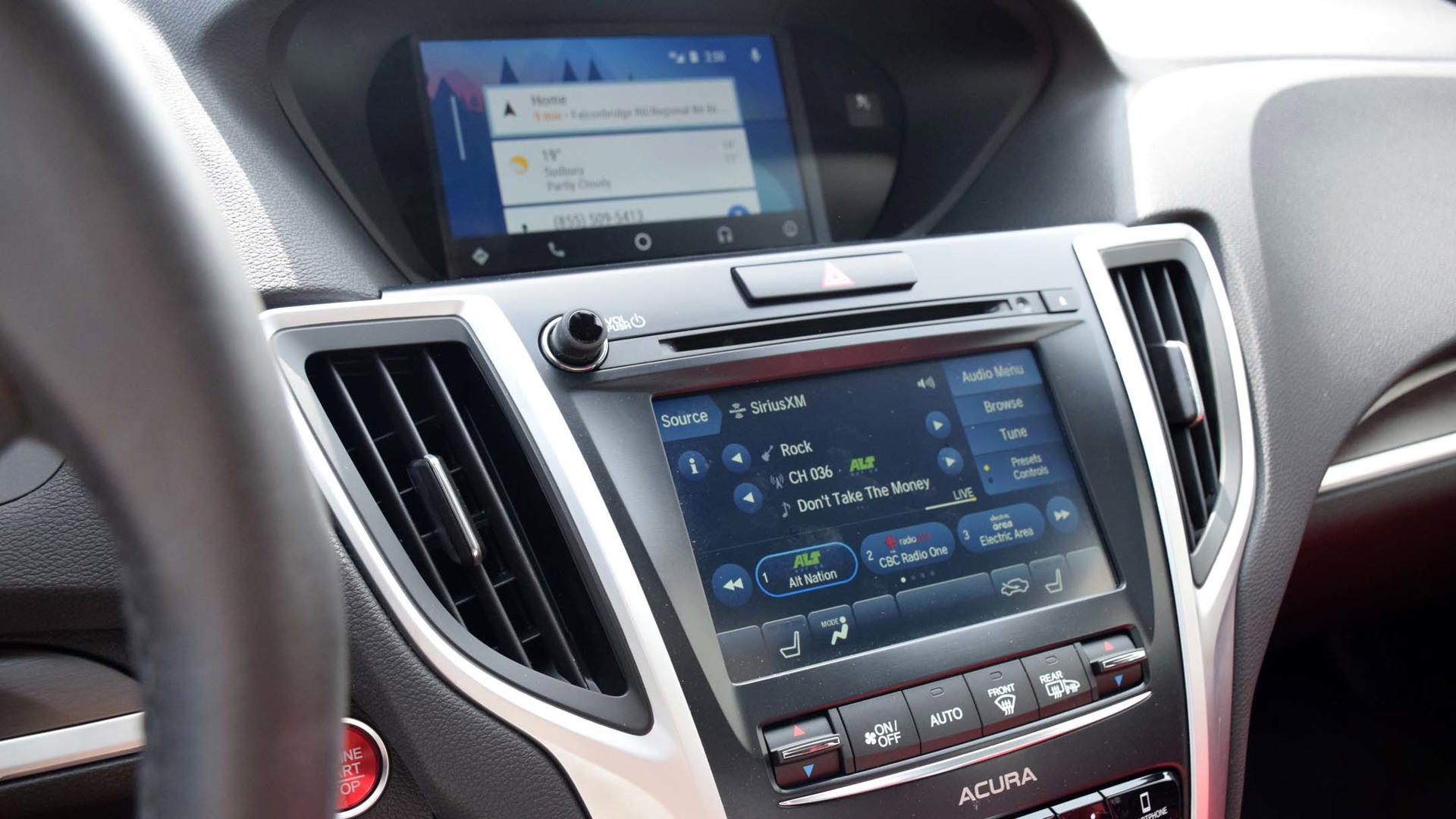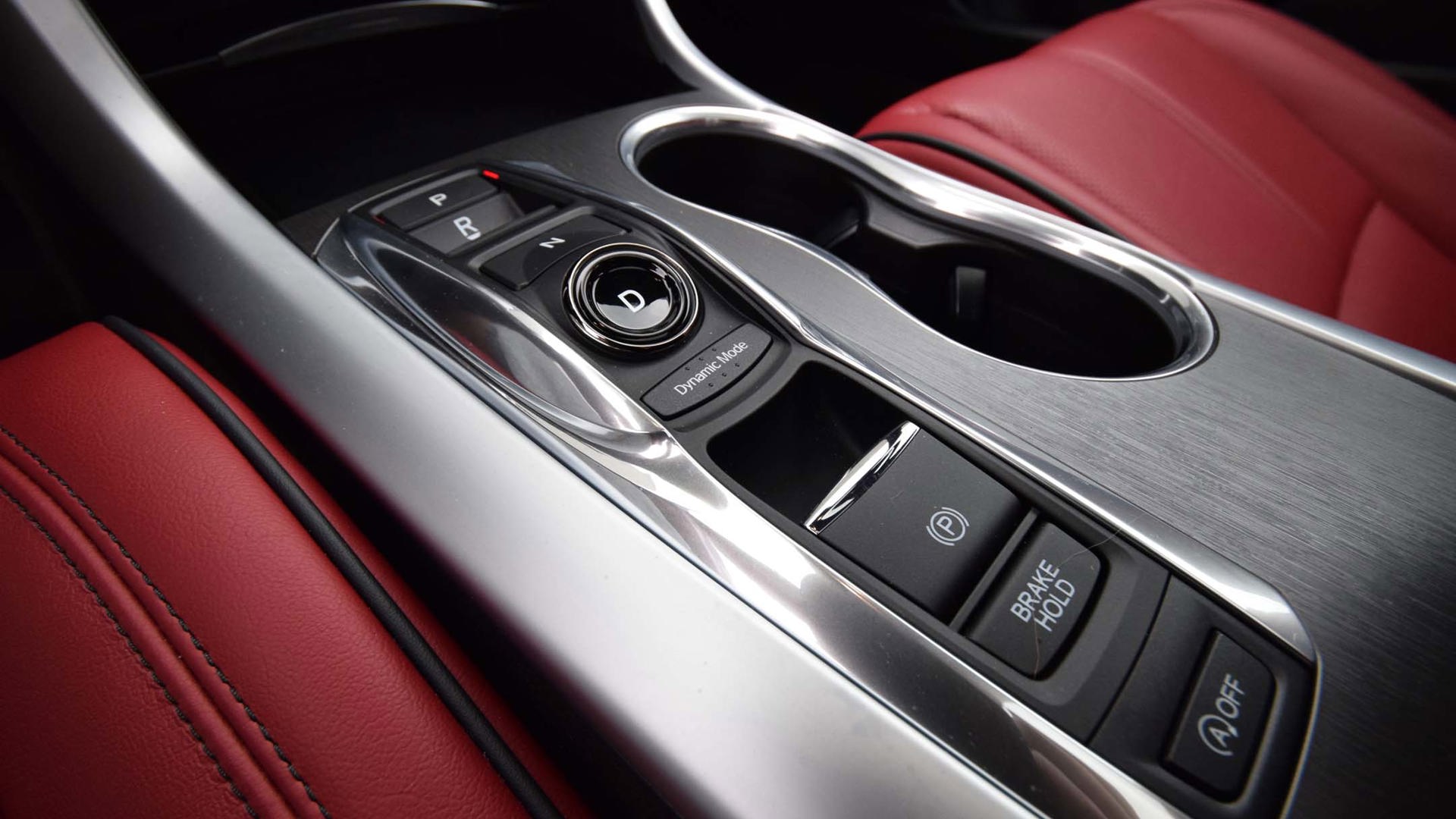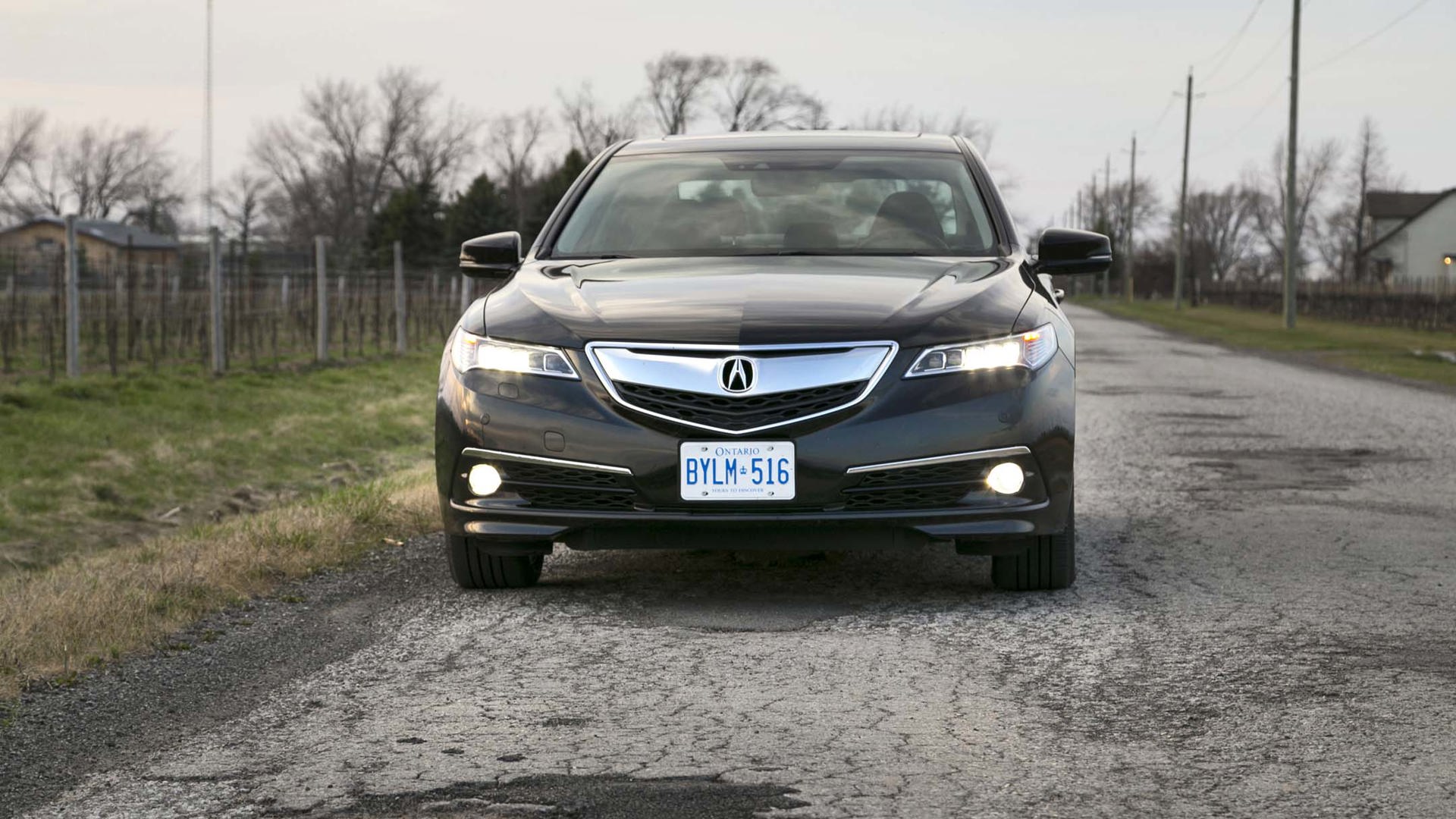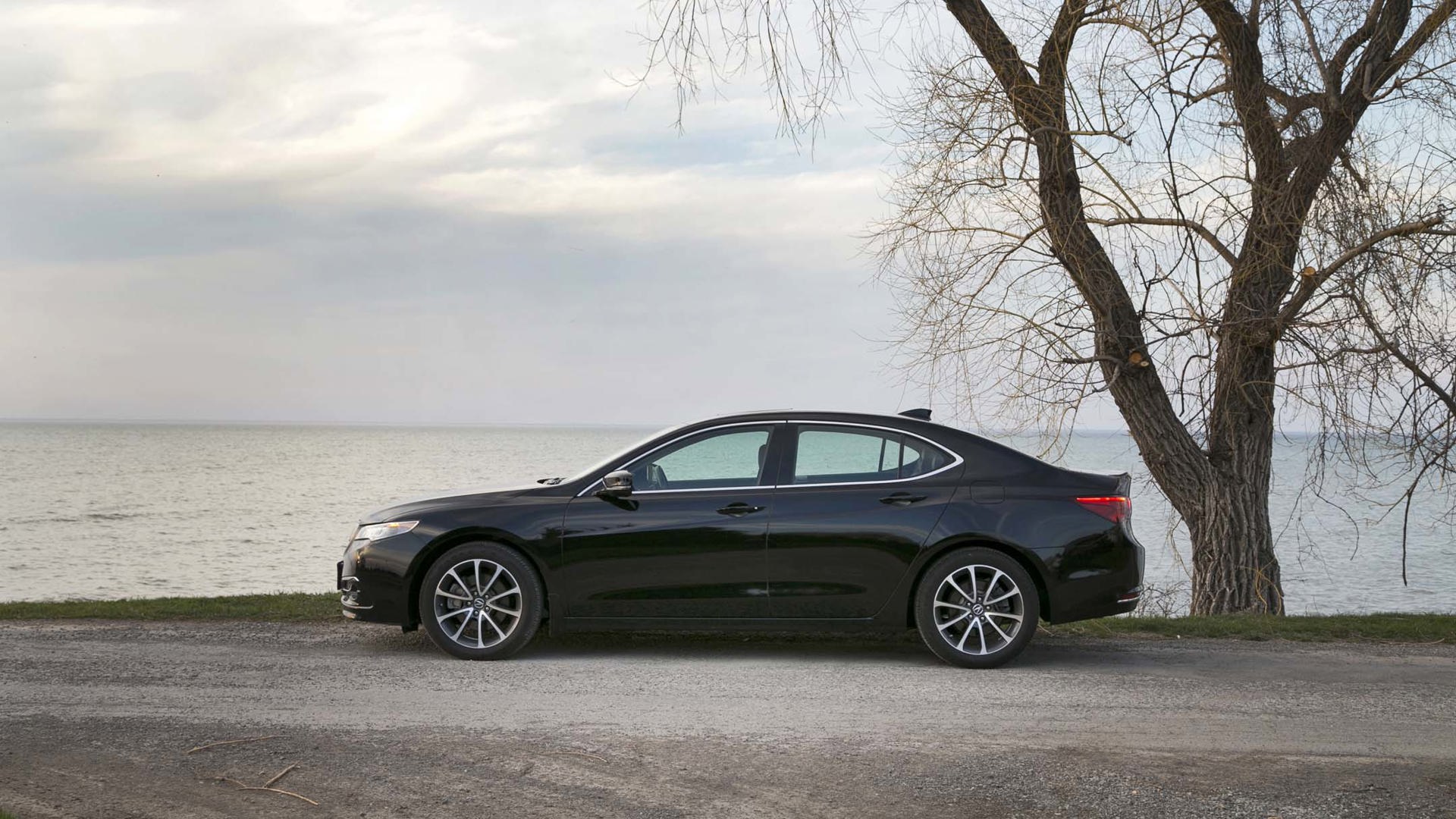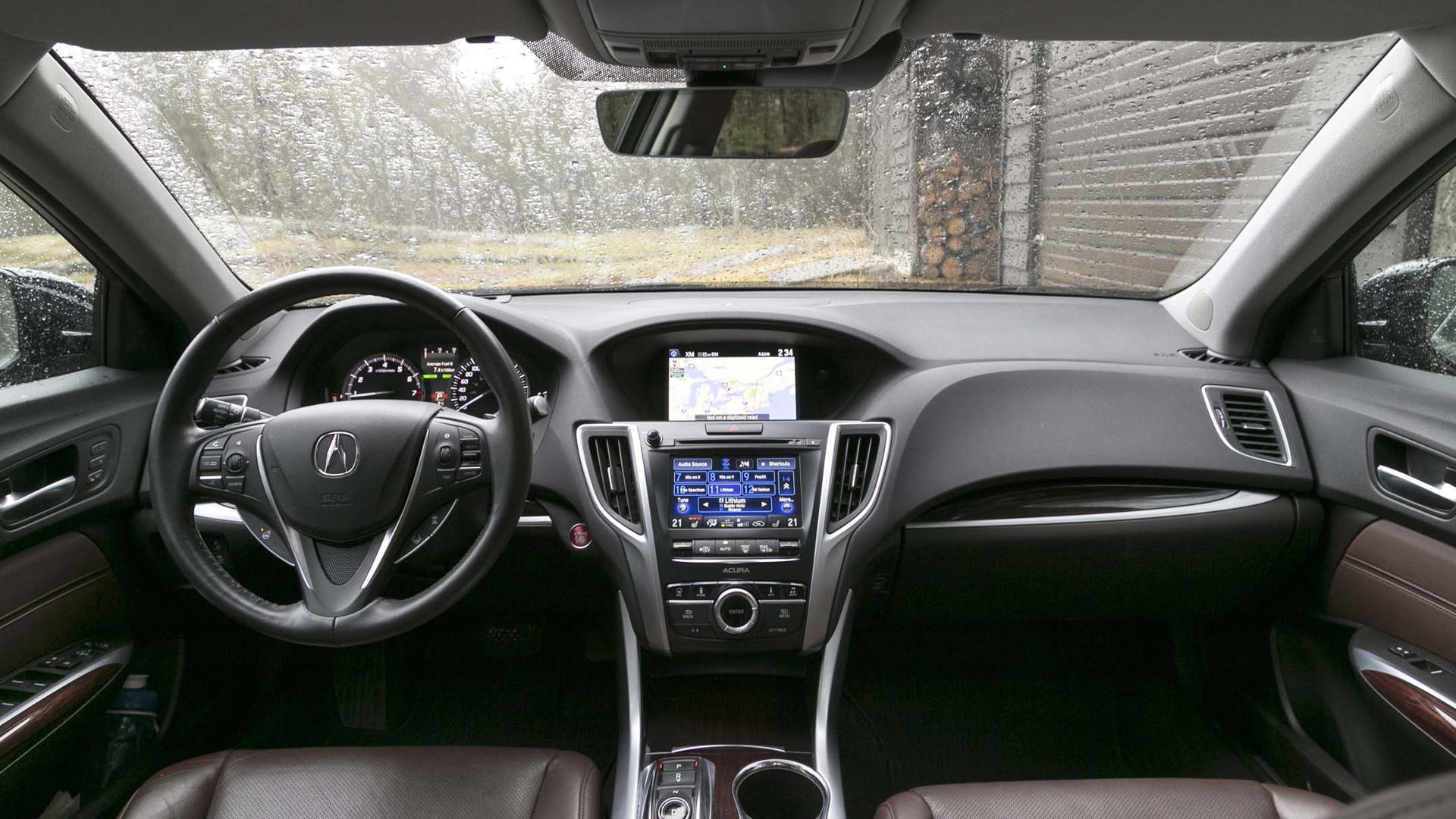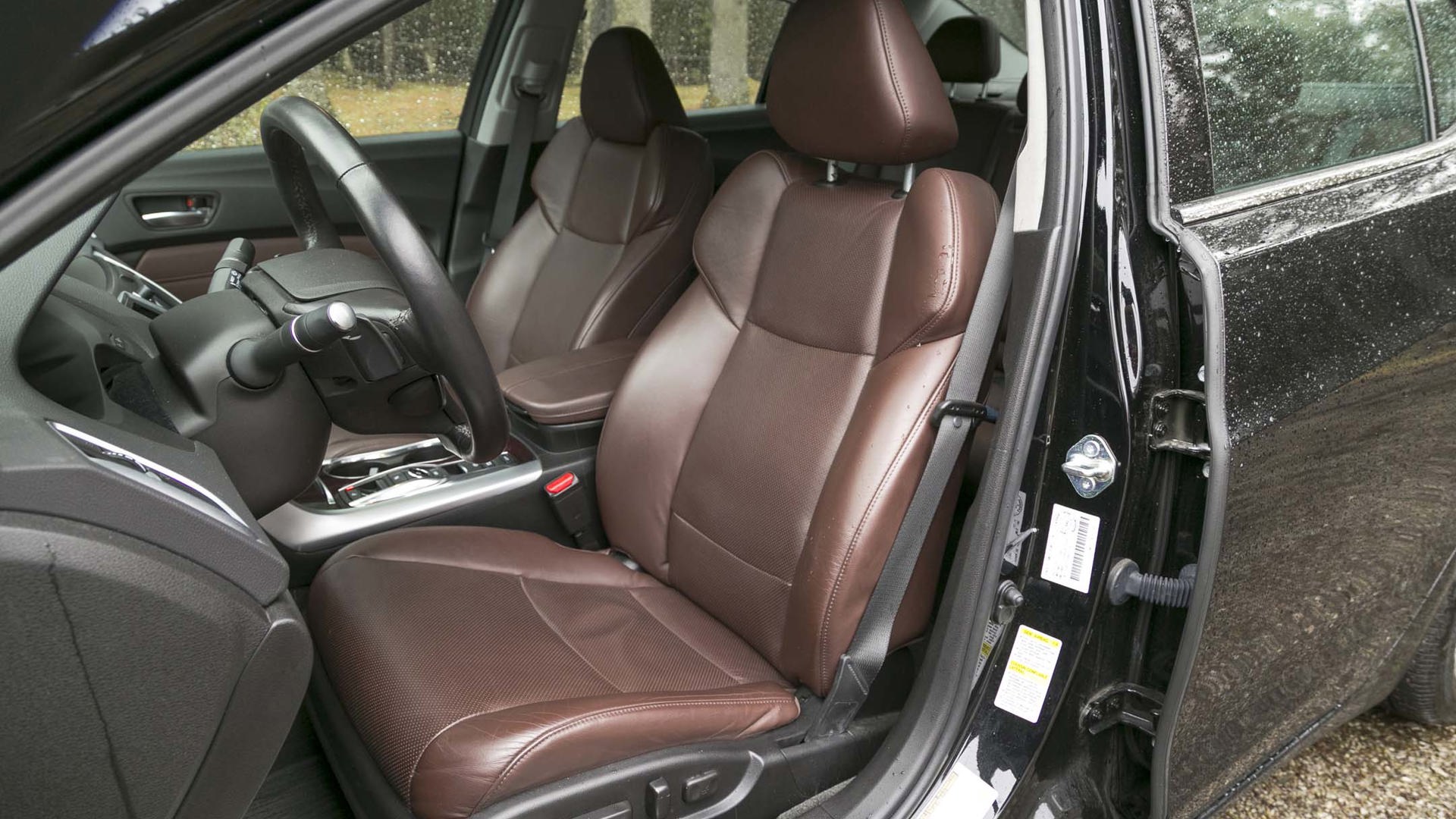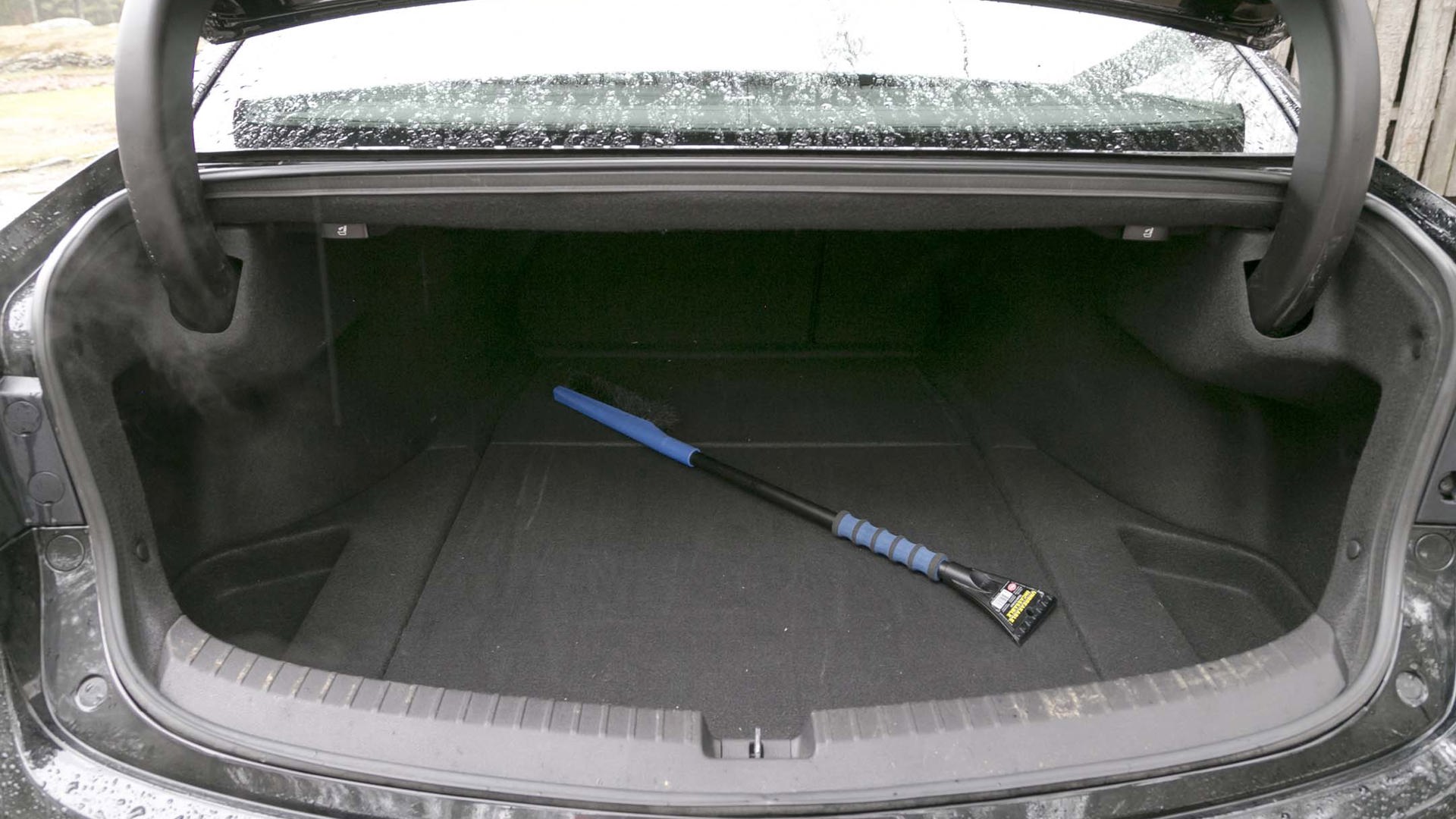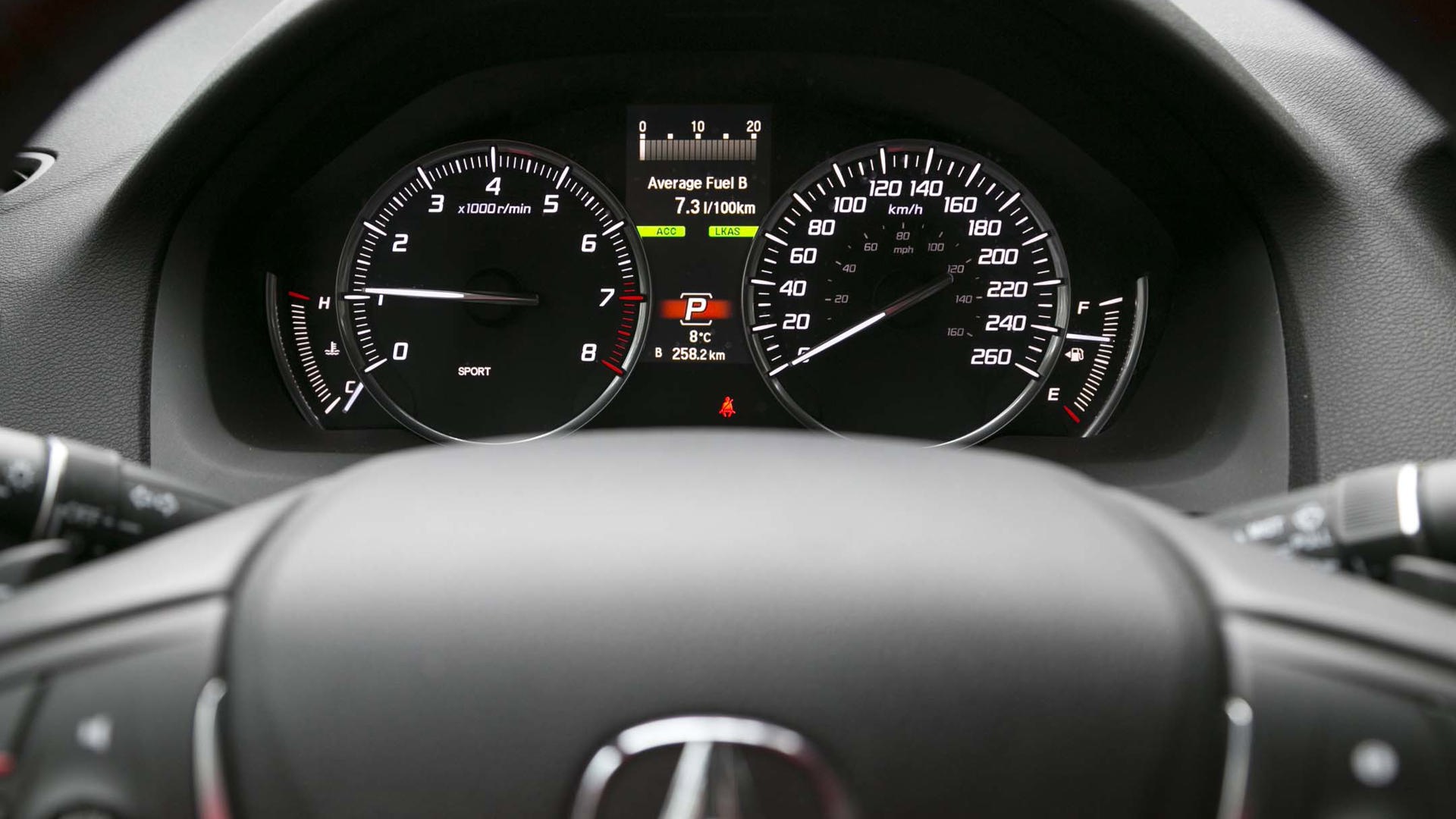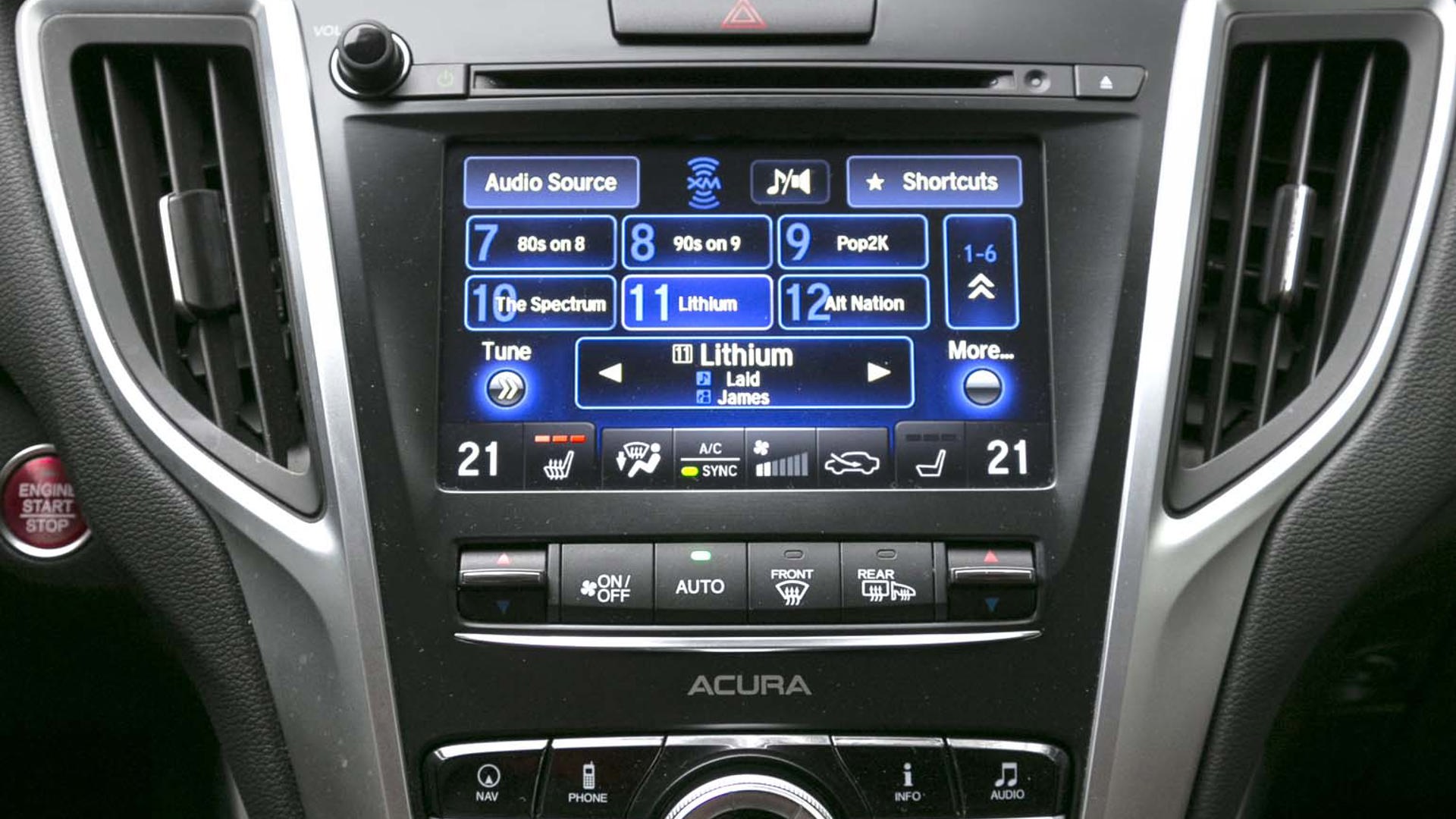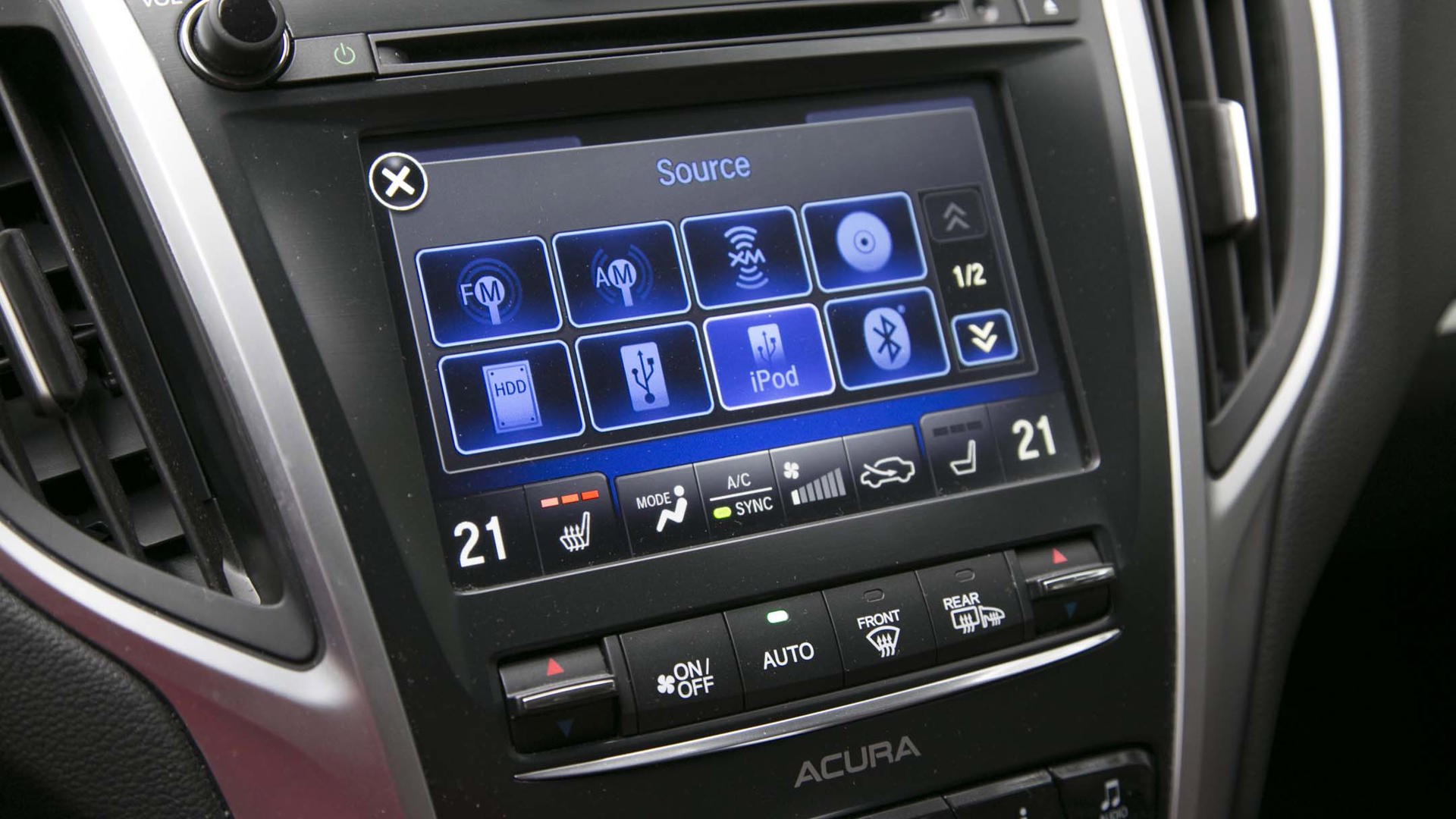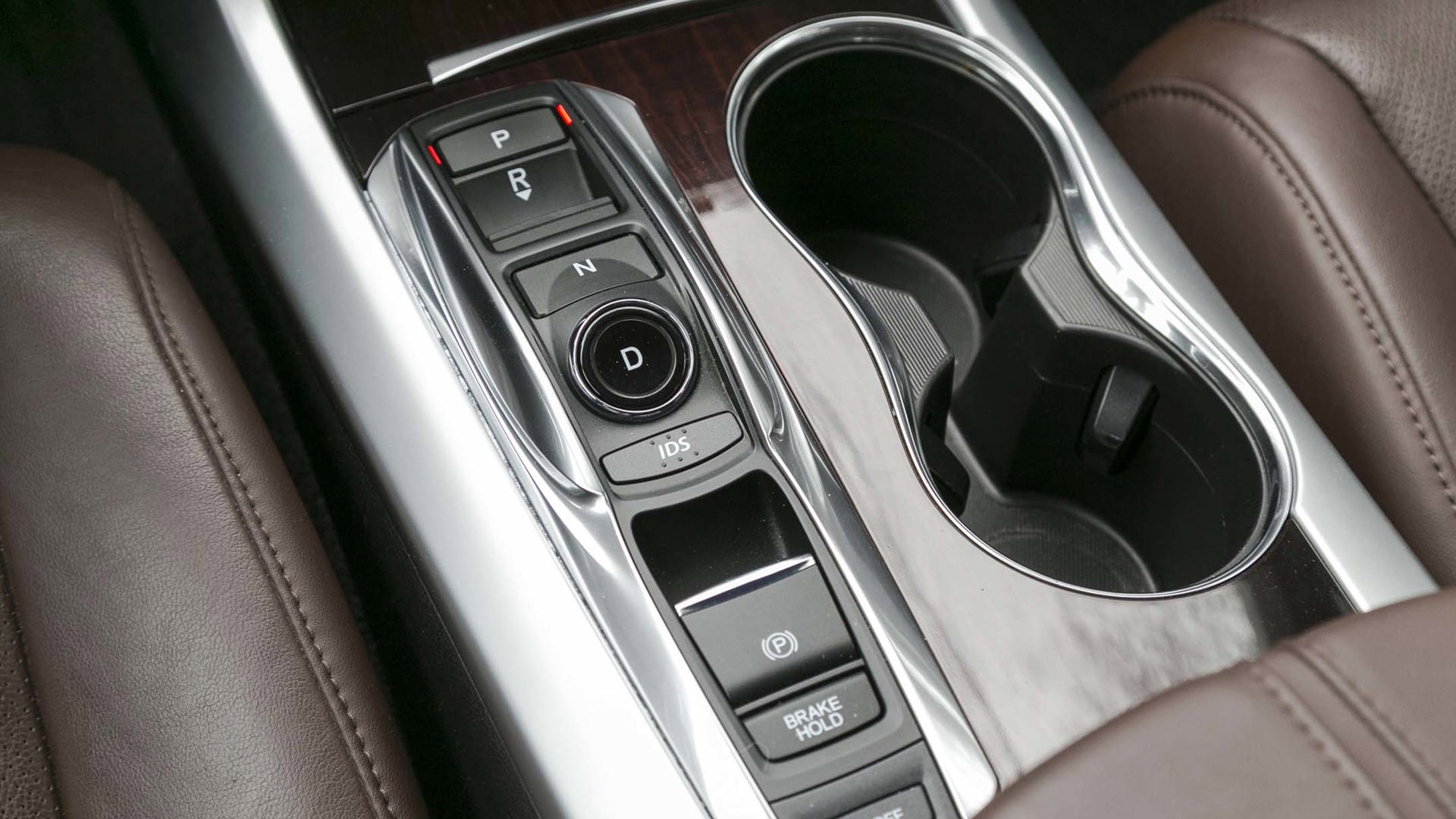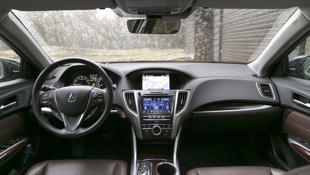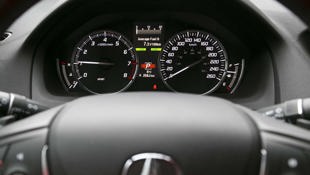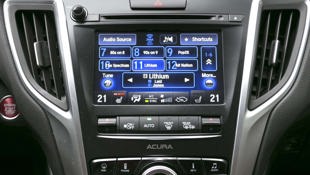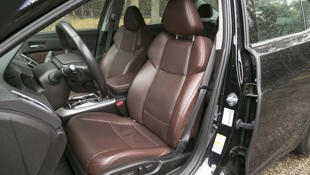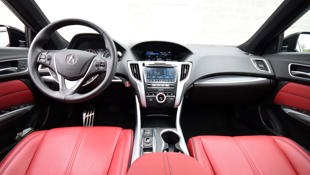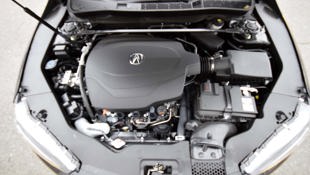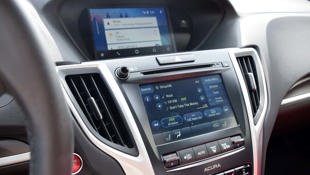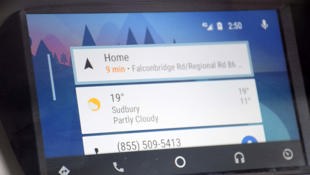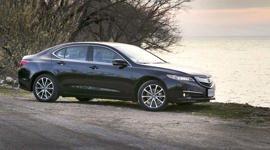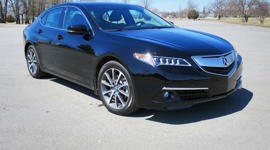Vehicle Type
Most owners say the TLX rides in that “just right” range between sporty and comfortable.
Sport Luxury Sedan
History/Description
Acura launched the TLX back in 2014, bringing their latest sedan to market for model year 2015 with little short of their latest and greatest connectivity, safety, performance, and luxury features.
All models are four-door sedans, backed by strong resale values, strong reliability ratings, and strong owner satisfaction. The TLX earned numerous awards from industry authorities for everything from crash-test performance to overall value, to the lowest costs of ownership in the segment.
Reasonable pricing and a strong feature content level for the dollar helped move TLX from dealer lots. Pricing started in the mid-thirties, and numerous trim levels, options packages, and drivelines could be specified to tailor the TLX to any need or budget.
Look for climate-controlled leather, powerful LED headlamps, a sunroof, premium ELS stereo system components, navigation, Bluetooth, automatic everything, memory seating, push-button ignition, full text-messaging integration with automatic read-out of incoming messages, and the AcuraLink system – which allows drivers to access, monitor and control certain vehicle functions from their smartphone.
A plethora of safety features was also available, including lane-keeping assist, blind-spot monitoring, radar cruise, and collision alert. Shoppers after the top-line TLX should consider the TLX Elite model, though others were available.
Engines
Two engines were on offer: a 2.4-litre four-cylinder with 206 horsepower and a peaky, high-revving redline; or a 3.5-litre, 290 horsepower V6 that impresses with creamy-smooth torque and plenty of high-revving pull.
The four-cylinder engine came teamed exclusively with an innovative eight-speed dual-clutch automatic transmission, which boasts fully automatic operation and lightning-fast gear changes perfectly rev-matched in both directions. The V6 came with a nine-speed automatic transmission, which included paddle-shifters.
All four-cylinder-powered TLX models are front-wheel drive and include four-wheel steering. All TLX models with the brand’s SH-AWD system got the V6 engine and front-wheel steering.
What Owners Like
Many owners appreciate the TLX’s up-level features – including the premium stereo and lighting systems, and the advanced safety features which work smoothly and predictably. Most owners say the TLX rides in that “just right” range between sporty and comfortable, and pleasing performance is noted from both available drivelines. Note that the TLX’s AWD system requires none of the driver’s attention, and works expertly to enhance traction and confidence in any situation.
What Owners Dislike
Complaints tend to centre around very dated navigation and infotainment system graphics, some dated on-board controls, and looks that may prove too discrete for some premium car shoppers. Further, larger passengers may wish for a little more rear-seat space.
Here are some owner reviews.
Pro Tip: Software Updates, Hardware Benefits
The TLX you’re considering may have one or more outstanding software updates that can be applied by a dealership to correct, optimize, or improve the operation of one or more systems – including the transmission. Running a vehicle with the latest available software is ideal for the best possible ownership experience, and software updates can prevent dead batteries, improve vehicle refinement and mileage, and may even improve safety.
Before you buy, or as soon as possible after you do, contact your local dealership to see which, if any, software updates may be outstanding for the specific TLX you’re after, and make plans to have them performed as soon as possible.
Pro Tip: Direct Injection Needs Diligent Care
Note that both of TLX’s engines are direct-injected – meaning that new owners should make plans to have all oil changes completed on or ahead of schedule, using only Acura-specified oil and filters. Also, be absolutely certain to adhere strictly to spark plug change intervals, erring on the side of early spark plug changes for best results. Consistent use of Top Tier gasoline at the factory-specified octane rating is also highly advised.
These steps can help effectively fend off problems related to a long-term buildup of valve gunk, which is not uncommon across direct-injected engines from virtually any manufacturer.
The Test Drive
Understand the Transmission
If you’re set on a four-cylinder TLX (with the dual-clutch automatic transmission), it’s imperative to approach your test drive with an understanding of how that transmission works and feels, as well as an understanding of its maintenance requirements. This type of transmission may, in certain situations, feel slightly different from a conventional automatic – particularly when creeping at very low speeds, or when stopped on a steep grade.
Note that hard shifting, clunking, or unwanted noises are not part of normal operation for this type of transmission. If you detect anything unusual, be sure to have the vehicle inspected by an Acura technician before you buy, just to be safe.
Often, problems with smooth shifting and performance of this type of transmission are remedied with the installation of updated computer software – though (pricier) mechanical or maintenance-related problems can cause similar symptoms.
The same goes for V6 units (with the nine-speed automatic). Though owner complaints versus total sales volumes are relatively rare, it’s on the test driver to be on the lookout for warning signs. If in doubt, have an Acura technician check it out.
Here’s some more reading about rare but noteworthy transmission trouble signs.
Service Records Mandatory
Seek out a used TLX with full service records for maximum peace of mind. Remember that even the most reliable vehicles on the road require occasional servicing, maintenance, and inspection to keep them in top condition. Even though the TLX has a well-earned reputation for reliability, poor habits of previous owners can cause problems. Note that failure to properly maintain the vehicle, perhaps by stretching or skipping maintenance items as listed in the owner’s manual, may cause damage or wear that’s not covered by any remaining warranty. For this reason, buying a used TLX without full service records is not advised.
Check the Fancies
It’s likely that you’re considering a TLX, in part, because of its high-end feature content. For best results, confirm that all of these features are in proper working order. Check the power seats and their memory and heating functions, the navigation and Bluetooth systems, the climate control on all settings, all instruments and screens, all controls mounted to the steering wheel, and anything else on board that runs on electricity.
Confirm proper operation of the rain-sensing wipers by engaging their “auto” position, and spraying or pouring water on or near the top-centre area of the windscreen. The rain sensor is located on the exterior, near the rear-view mirror, and should trigger the wipers when wet.
Now’s also the time to check the TLX’s remotes, door locks, and push-button ignition. Note that a weak battery in the remote, or a weak vehicle battery, may be to blame if the TLX doesn’t fire up instantly when the engine start button is pressed.
Check the Back-up Camera
According to this discussion, some owners have reported moisture buildup in the TLX’s back-up camera, which can block or distort the image. A simple check is, therefore, in order.
First, clean the lens. It’s above the licence plate, and can be cleaned easily with a quick swipe of a moistened finger. Then, engage reverse and scrutinize the on-screen image. If it’s not clear, colourful, and crisp from one corner to the other, have a dealer investigate. Some owners have had moisture-damaged camera modules replaced under warranty.
Check the Safety Gear
Depending on the model selected, your perspective TLX may include radar cruise, blind-spot monitoring, lane-keeping assist, a back-up camera system and more. On your test drive, be sure to engage and disengage each of these, several times. Confirm consistent operation and be on the lookout for any warning signs or error messages in the instrument cluster or central screen. If any are noted, the corresponding system should be assessed by a technician before your purchase. Attempting to fix or “reset” an error message by disconnecting and reconnecting the vehicle battery is not advised.
Electronic Parking Brake (EPB)
The TLX uses an electronic parking brake that engages at the touch of a button. Engage and disengage this brake, several times on your test drive (while the vehicle is stopped). Ensure that it engages and releases as expected, as outlined in the owner’s manual. Any failure of the brake to engage or release, or (likely later during ownership), any sudden or unintended application of the parking brake while (for instance) reversing slowly from a parking space, is a sign to have the vehicle assessed by a dealer immediately. Here’s some more reading. This parking brake problem is a rare one, but worth being aware of. This issue may be more likely on 2015 and 2016 models, may trip one or more warning lights in the instrument cluster, and may require dealers to replace a computer module (often under warranty) as a remedy.
Verdict
According to my research, the vast majority of TLX owners seem satisfied with their machines. The most commonly reported problem in my research centres around jerky or uncomfortable operation from both of TLX’s available transmissions. This issue, if apparent, seems more likely on earlier units, perhaps 2015 and 2016. In the majority of reported cases, the fix was a simple transmission software update.
Other reported issues are typically more minor, easy to detect, and easy to remedy. Our advice? Shop for a 2017 or newer model if feasible – though a full check-up of an older unit by an Acura technician, and confirmation that all software updates have been applied (especially to the transmission), can go a long way here, too.
Safety Ratings
IIHS: Top Safety Pick + (2015)
NHTSA: 5/5 stars

